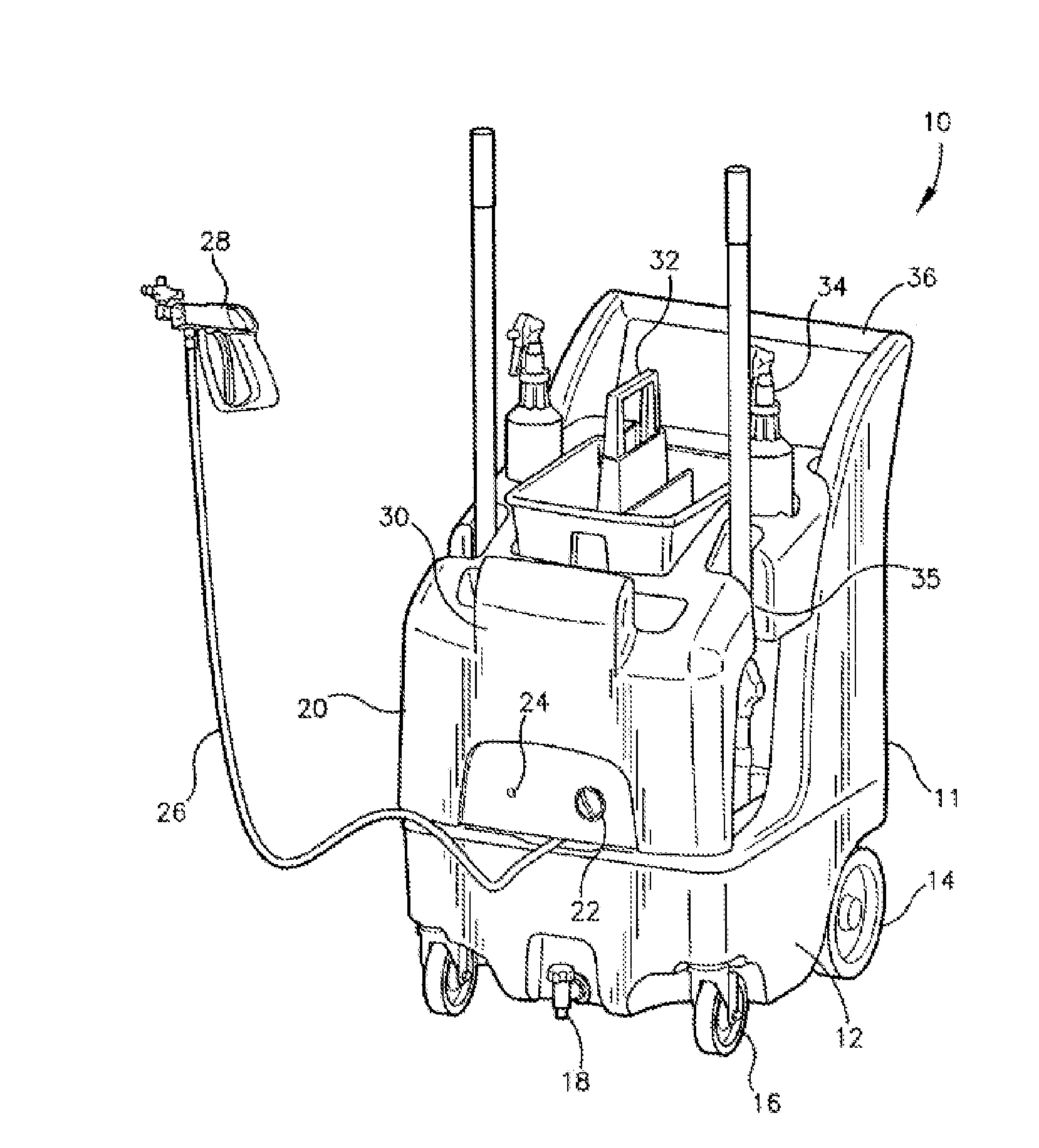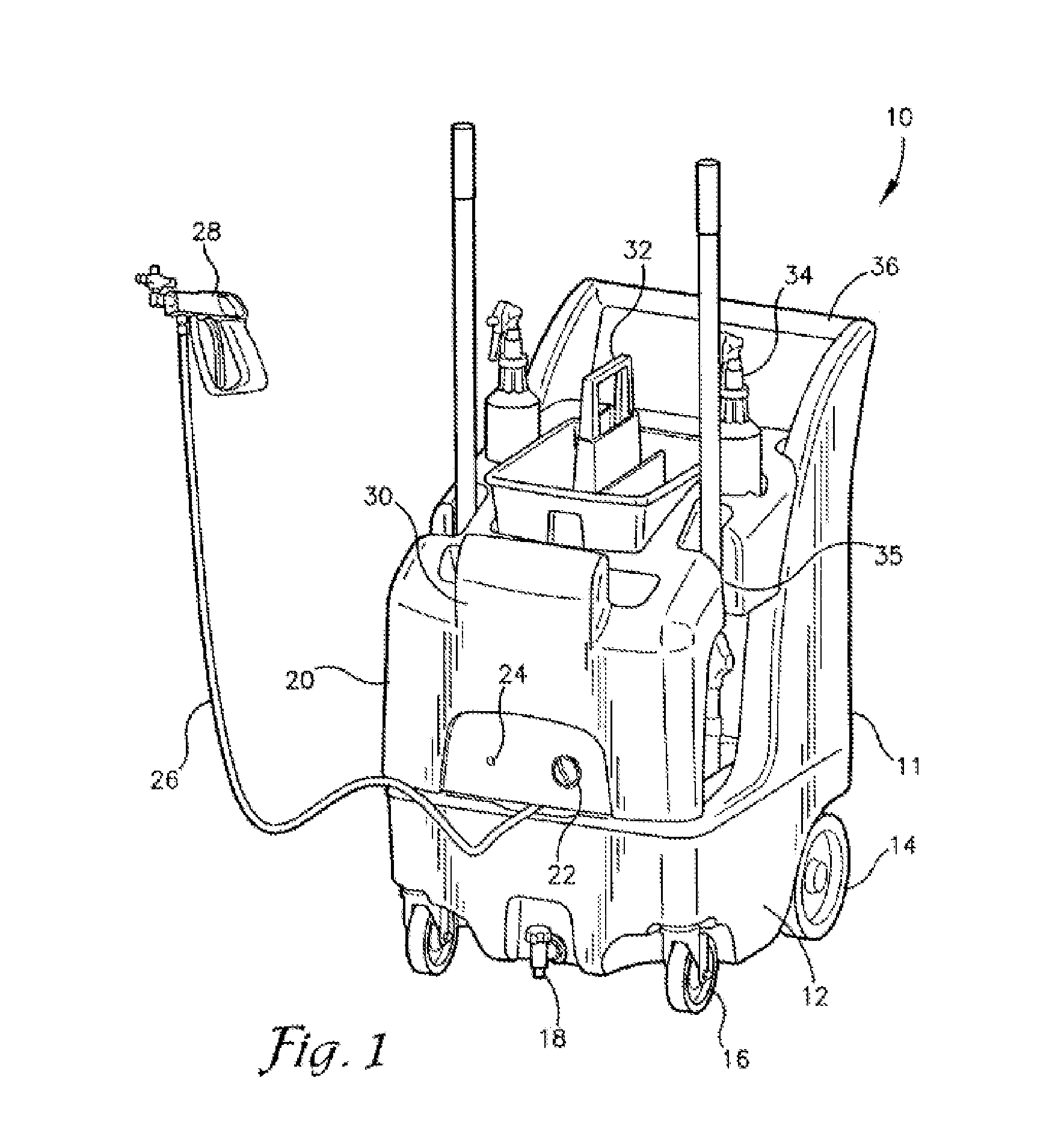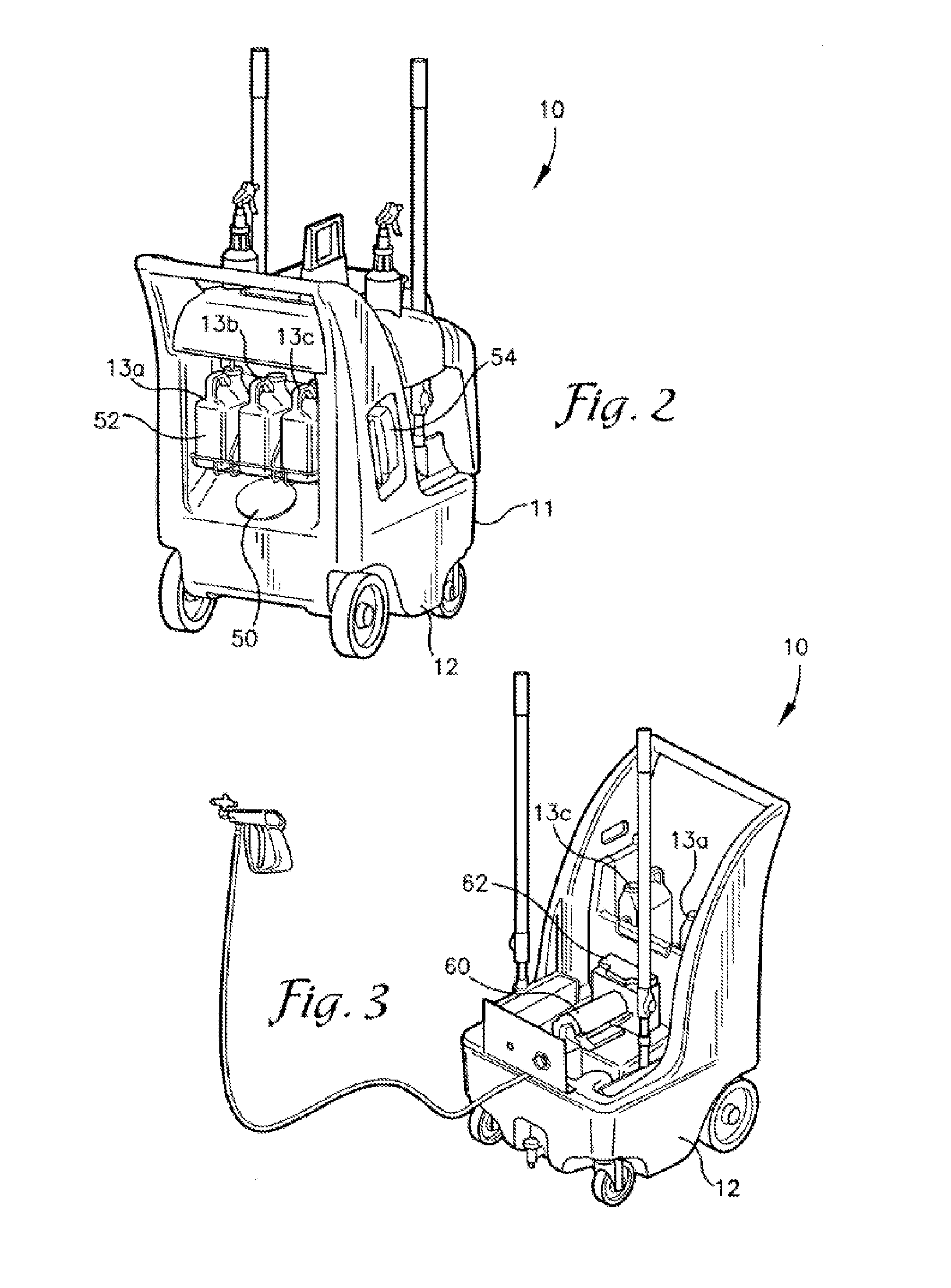Method of minimizing enzyme based aerosol mist using a pressure spray system
- Summary
- Abstract
- Description
- Claims
- Application Information
AI Technical Summary
Benefits of technology
Problems solved by technology
Method used
Image
Examples
example 1
Anti-Mist Floor Cleaner Metering Tip Determination for the Caddy Test
Purpose
[0090]The designated values attributed to the metering tips are guaranteed only with water thin products. The standard and sanitizing no-rinse floor cleaners were based on the metering tips chart as they were water thin. This test was done to determine which metering tip is appropriate for dispensing 2 oz / gal of the anti-mist enhanced cleaning solutions.
Metering Tips
[0091]The following chart is to be used as a guide. The list shows orifices in ascending order from smallest (Brown) to largest (Black).
0.56 oz / minBrown0.88 oz / minClear1.38 oz / minBright Purple2.15 oz / minWhite2.93 oz / minPink3.84 oz / minCorn Yellow4.88 oz / minDark Green5.77 oz / minOrange6.01 oz / minGray7.01 oz / minLight Green8.06 oz / minMed. Green9.43 oz / minClear Pink11.50 oz / min Yellow Green11.93 oz / min Burgundy13.87 oz / min Pale Pink15.14 oz / min Light Blue17.88 oz / min Dark Purple25.36 oz / min Navy Blue28.60 oz / min Clear Aqua50.00 oz / min Black
Procedure
[00...
example 2
[0104]Experiments were undertaken to attempt to reduce aerosolization of proteins from solution applied in commercial cleaning caddy systems. The cleaning caddy has a spray device, which is used for applying various non-enzymatic cleaning products to hard surfaces, that sprays at an average pressure of 70 psi. In this assessment the enzymatic cleaning product is mixed with water at a ratio of 2 oz / gal (15.6 ml / l) before being sprayed on tile floor at a flow rate of ½ gallon / min (1.9 l / min). The undiluted product contains 1% Lipex 100L (Novozymes).
[0105]An experiment was undertaken to evaluate the amounts of aerosolized enzymes that the person operating the cleaning caddy will be exposed to.
[0106]The experiment was performed during use of a commercial caddy system as described herein product and three formulations, a standard no-rinse formulation, a sanitizing cleaning composition and an anti-mist formulation. These formulations have been applied using the existing spray device. All ...
PUM
 Login to View More
Login to View More Abstract
Description
Claims
Application Information
 Login to View More
Login to View More - R&D
- Intellectual Property
- Life Sciences
- Materials
- Tech Scout
- Unparalleled Data Quality
- Higher Quality Content
- 60% Fewer Hallucinations
Browse by: Latest US Patents, China's latest patents, Technical Efficacy Thesaurus, Application Domain, Technology Topic, Popular Technical Reports.
© 2025 PatSnap. All rights reserved.Legal|Privacy policy|Modern Slavery Act Transparency Statement|Sitemap|About US| Contact US: help@patsnap.com



